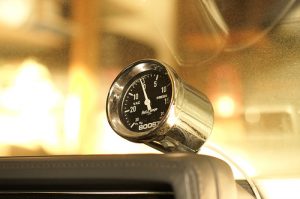
In February, the Aubia Communications Blog will explore the new industry focus of measurement and evaluation in public relations. I start with trends in the area, followed by a post on how you can develop a M&E plan, and I’ll close out with a review of a journal article on M&E in social media.
“These are great objectives, Monica, but how did you move the needle?” As I stood in front of my Accreditation in Public Relations review board in 2010, walking these senior practitioners through my strategic communications plan to position a military resiliency program as the premier lifestyle for service members and their families, this question stopped me in my tracks.
I had done the research, outlined the communications opportunity and goal of the plan, identified the target audiences, set the objectives, developed the strategies, crafted the key messages, created and implemented the tactics on a timeline and within a budget, and I thought I had done a pretty good job of measuring and evaluating my results. As I began to formulate a response about how the installation had seen an increase in sign-ups for resiliency trainings and the directors of the program had witnessed an uptick in requests for information, the lead reviewer stopped me once again. “Those are wonderful key performance indicators, but your objectives were to increase awareness and participation by 40 percent among the installation’s active-duty service members. Can you show us you reached that percentage?” I couldn’t. After some discussion, my review board panelists helped me to understand how I had missed a benchmark opportunity in my research to determine the before-and-after effects of my strategic communications plan. As I could articulate and reason what I should have done to make my measurement and evaluation efforts stronger, I was advanced on to earn my APR in 2011.
This moment has always stuck with me in my career. It is the reason I signed up for a Measurement and Evaluation in Public Relations course for my master’s studies, and it’s why I continue to be an avid reader of The Measurement Standard. PR is a constantly evolving field, and M&E is just one of the major areas that is demanding attention.
Why measurement and evaluation in public relations are more important than ever
As I discussed last month here, PR professionals need to understand and participate in all areas of business to be credible resources for the CEO or, as business owners, for ourselves. We can’t do that if we can’t prove how our efforts are affecting the organization’s bottom line. As we continue to prove our worth and work in a world more focused on Integrated Marketing Communications, the more we can prove by the numbers how we’re “moving the needle,” the more valuable we become.
As our value to the senior executives is paramount in our professions, it is even more so to our clients. The ICCO Trends Barometer for Q3 in 2013 showed 60 percent of respondents reporting clients were now more interested in measurement than they were just two years ago. As those we serve, internally and externally, have become more socially and economically savvy, they expect more concrete results. If we are to continue to be of value to important stakeholders, we must responsibly demonstrate what we are capable of producing.
How measurement and evaluation in public relations are changing
As practitioners are increasingly held more accountable in business practices, three major changes are taking place in the area of measurement and evaluation in public relations.
1. The AVE is dead.
In the past, “gut feelings” and soft measures were acceptable for public relations. For decades, measuring our efforts through Advertising Value Equivalents, comparing the length of an earned-media piece to how much it would have cost to secure the same space in advertising dollars, was the norm. As this practice has been falling out of favor for some time now, PR professionals are looking to more worthy endeavors to prove their value to the business, such as employee satisfaction surveys and media analyses.
2. M&E expectations are becoming more standardized.
The No. 1 lesson I took away from my Measurement and Evaluation in Public Relations course last summer was there is no one standard way to conduct a M&E program. There are, however, certain requirements that need to be met in order to offer valuable measurement and evaluation in public relations. These requirements are outlined in the seven Barcelona Principles that were set forth in 2010 at the International Association for the Measurement & Evaluation of Communication summit.
3. Big data is where it’s at.
In a recent Foreign Affairs article, an editor for The Economist and a professor at the Oxford Internet Institute state there is so much data today that each person alive, approximately 7 billion, can receive 320 times the amount of information that was stored in the Library of Alexandria, the house of all human knowledge in the 3rd Century BC. That’s a lot of information to process. This data can be gold mines of value in developing meaningful relationships with target audiences, but with the information coming in from all directions at all times, putting it to good use can be overwhelming. As a communications professional, if you can untangle and apply all this valuable data, you increase your own value.
What changes in measurement and evaluations in public relations have you noticed?
These are Top 3 changes I’ve witnessed in the field, but what else is happening? What changes do you see occurring in the industry?



